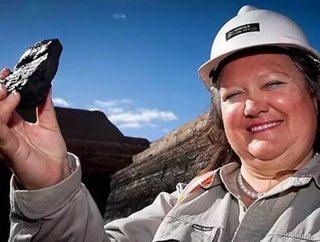Gina Rinehart: Government to Blame for High Mining Costs

The price of iron ore has lost more than two-thirds of its value since its peak in 2011. It is currently priced at less than $50 a ton, and according to some economists, it hasn’t even hit rock bottom. By that time, “bankruptcy” will be writ large on many a small miners’ walls. It will also have given Gina Rinehart indigestion.
Until recently, Rinehart was considered the richest woman in the world with $20 billion in her bank account. The plummeting of iron ore’s price has now wiped out about 36 percent of her wealth, leaving her with less than $15 billion, as reported by the Australian Broadcasting Corporation (ABC).
Rinehart, an Australian, is the heiress of Lang Hancock, her father, who built up Hancock Prospecting. Interviewed by ABC, historian David Lee explained, "Lang Hancock's main fortune was built on royalty deals. He wasn't able to bring to culmination some of the more ambitious ventures in his own right to establish a mine.”
According to ABC, “After a ten-year struggle, Gina Rinehart negotiated a $7.9 billion debt deal using a combination of multiple export credit agencies and commercial banks.” Rinehart would use this investment as leverage to began building the Roy Hill mine, in Pilbara, Western Australia, for $10 billion. If the dream had escaped dad it was not going to slip out of the daughter’s hands. In the process, Rinehart would gain respect among her peers as a businessperson in her own right.
Then mining giants Rio Tinto and BHP Billiton began flooding the market with iron ore puncturing its price like a balloon.
The Roy Hill mine is about two-thirds finished. By the time it’s fully operational its capacity will be 55 million tons per year. 80 percent of its production has already been contracted. The drop in iron ore’s value, however, means that Roy Hill will be lucky if it breaks even.
Rinehart has taken out her misfortune on the Australian state and federal government, claiming that building costs have affected Roy Hill, not the drop in the price of iron ore. Quoted in the Sydney Morning Herald, Rinehart says, "What affects the project is high costs...As I have said so many times it is really important government cost burdens are lowered. We have regulations; be it approval processes, be it permits, be it licences, be it the checks that have to go on after those compliances."
"They have to cut these government cost burdens because our costs are incredible," Mrs Rinehart said.






